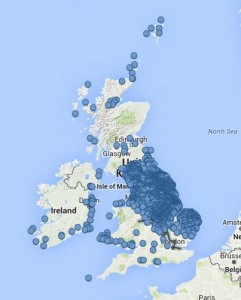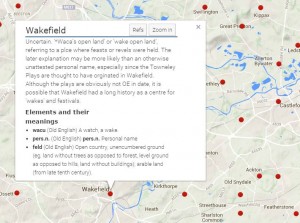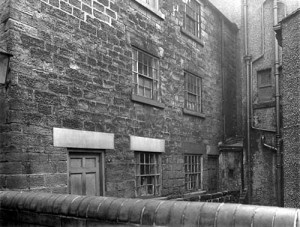Norrieston Kirkyard, Thornhill, Stirlingshire
Having driven through Thornhill, Stirlingshire many, many times but never taking the time to stop and look around the kirkyard. Well, it was a beautiful sunny day in early November, so why not stop and pay a visit.
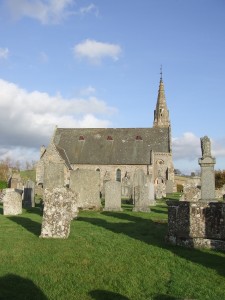
Norriston Kirk, Thornhill © Carol Sklinar 2015
I know the village is Thornhill as I photographed the war memorial years ago, but the sign on the kirk says Norrieston. Anyway, the car was parked a short walk away. I grabbed my bag and my camera, walked a few hundred yards and entered by a small gate.
As a family and local historian I have always taken great store in how much information can be gleaned from a piece of stone, granite or marble. A small glimpse into the lives of those who have gone before, but whose names are still visible for those who pass by and care to look. Whose name is foremost on the marker? Who remembered that loved one? When they were born, if you were lucky, but nearly always when they died. Some tell of occupations, abodes, and how many children may have been lost in childhood. While others remember loved ones who have died in foreign lands and others remember father’s, sons, brothers, daughters and sisters who fought in their own way for their country.
Many years ago, when I first started researching my family history, I could not understand why women in Scotland sometimes had two names. I now know that in Scotland a woman ‘keeps her name from cradle to grave’, and are sometimes recorded with both names, how easy is that? For example: In loving memory of John Riach and his wife Ann Hay. A headstone will have a husbands name and a wife’s maiden name, making looking for a marriage that much easier. Resulting in a lot less time to search for the marriage. Initially, I thought how many people just did not marry.
Anyway, back to seeing who rests or is remembered within the boundary walls of this Scottish kirk.
In loving memory of Robert Dick, Farmer of Munnieston, who died on 3rd February 1937 aged 88 years. And his wife Margaret Mackieson who died on 21st January 1940 aged 88 years. And their eldest son James Dick Private, 8th Cameronians presumed killed in Gallipoli on 28th June 1915 aged 35 years.
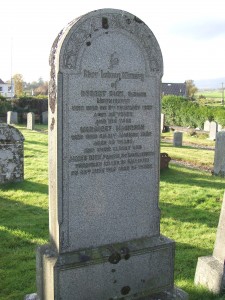
Dick family headstone © Carol Sklinar 2015
From this headstone we know a little about Robert. We know his wife’s maiden name. We know that James was their eldest son and he was presumed killed at Gallipoli – quite a bit of information for someone who may just beginning their family history research.
James Dick will be the main focus here. He lived at Thornhill, enlisting into the army in Glasgow. He died on the 28th of June 1915 and the CWGC confirm this but also give details of his service number, 143, his rank of private and his place of remembrance, the Helles Memorial. A look for James on the Army Register of Soldiers’ Effects, confirms the service number, regiment. In addition to the already known information this web information details that James died ‘on or since 28.6.15’ also Robert, his father, was the recipient of monies owed to his son.
Another resource available to researchers is the Medal Rolls Index Cards. The card for J Dick, amended to James, gives details of his regiment, his rank, his qualifying service dates, theatre of war, how he ‘met his maker’ and a note for the disposal of his medals. So, James entered the Balkans in mid June 1915 and had ‘died’ two short weeks later.
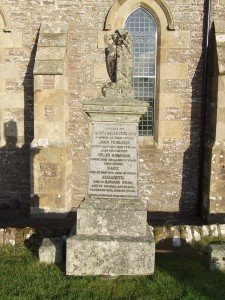
Ferguson family headstone © Carol Sklinar 2015
Have you ever ‘lost’ a relative during research, they simply disappear? Then one day you visit the churchyard where the family rest and eureka! The headstone gives a clue as to why they disappeared.
Erected by Janet & Helen Ferguson in memory of their father, John Ferguson, died 6th May 1885(?) aged *7 years and their mother Helen Morrison, died 9th June 188* aged 80 years. Their sisters, Mary, died 9th Decr 1878 aged 38 years. Elizabeth wife of Edward Webb, died at Ararat, Australia, February 1879 aged 45 years.
This headstone did not only give Helen’s maiden name, it also told where one of her daughters lived and died. Another family history box ticked
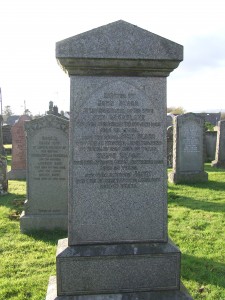
Black family headstone © Carol Sklinar
Names of crofts, villages, towns and occupations are also found on headstones thus pinning your research down to smaller areas.
Erected by John Black in loving memory of his wife Ann McFarlane, who died at Causeway End 28th June 1908 aged 79 years. Also the above John Black, who died at Whitehill, Greenloaning 6th February 1908 aged 66 years. David Black who died at South Africa, September 1908 aged 29 and their daughter, Janet, who died at Greenloaning, April 5th 1917 aged 67 years.
Then there are headstones to whom we are very grateful to those who told the monumental mason in great detail what to include. The family of Robert Thomas Downie chose a unique design for his headstone along with full dates of birth and death for most of those remembered upon it.
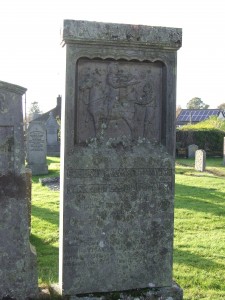
MacLaren family headstone © Carol Sklinar 2015
Robert was born in April of 1826 ad died in December 1886. Others remembered on the headstone in Thornhill Kirkyard are:- William Downie, Janet Gardner Downie, Wm Downie MacLaren who died in France, Janet Downie, Robert Alexander, Janet Marjorie Banks, Margaret Forrester. Lichen has taken its toll on some of the dates but a closer inspection could solve that problem.
Wm Downie MacLaren stands out for me on the names listed. Who was he, which regiment did he serve in and where did he die? Firstly, William was the son of W G and Mrs F MacLaren of Drummore, Doune. The CWGC entry for him gives his regiment as the Canadian Infantry, his service number as 437495 and hi rank was, private. He died on the 8th of August 1918 aged 24 resting in Toronto Cemetery, Demuin, which is in the Somme region of France.
As William served in the Canadian Infantry, a look at the Canadian Archives came up with his entry, but sadly, his records have not been scanned yet! But, it can be seen that his name is spelt McLaren. His reference for the records is RG 150, Accession 1992-93/166, Box 7019 – 12 with an item number of 157791.
After a pleasant walk around Norrieston kirkyard I now know a little more about who rests or is remembered within its walls.
Like this:
Like Loading...
